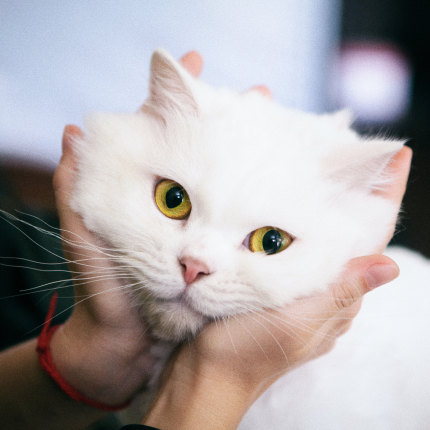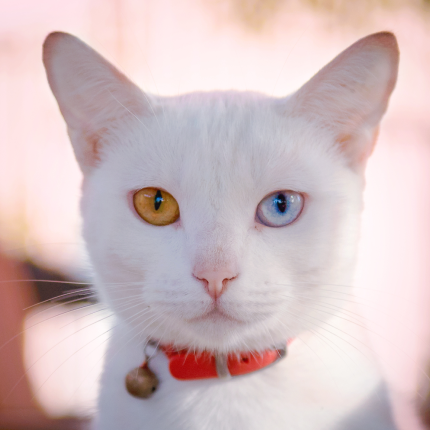Cats Are Perfect and Here’s Why

Cats have always captivated us with their charm and mystery. It’s no surprise for cat lovers that these felines are truly special. But what exactly makes them stand out in the world of evolution? Let’s explore the fascinating reasons behind their distinctive traits and their remarkable adaptation to various environments.
Feline Physical Characteristics
The idea of cats being evolutionary perfect stemmed from a book called “The Snow Leopard Project” by Alex Dehgan. In this book, Dehgan explores the existence of several cat species cohabiting in the landscapes of Afghanistan. This prompted the question: How can cats look so similar despite being different species?
At first glance, it might appear that cats exhibit considerable variations in their various breeds and coat colors. However, a closer look reveals a surprising similarity in their physical characteristics. Unlike many mammals, cats maintain infantile facial features throughout their lives. In simple terms, an adult cat looks much like a larger kitten. This sets them apart from the typical mammalian development.
In contrast, dogs undergo significant changes from puppyhood to adulthood, with short, round faces as puppies and longer, snouty faces as adults. This variation allows breeders to create dogs with diverse face shapes. Cats, on the other hand, lack this developmental variation, limiting breeders primarily to altering coat colors.
The Key to Kitty Success
The secret to cats’ evolutionary success lies in their unwavering specialization. All members of the carnivoran order, including cats and dogs, possess specific teeth designed for slicing meat. While many carnivorans have molars behind these slicing teeth to process various foods, cats have dispensed with this feature. This specialization explains why foxes can rummage through garbage while leopards prefer hunting livestock.
Whether it’s a small Bengal cat or a magnificent lion or tiger, their core physical traits remain almost identical. Cats have perfected their hunting skills to such a degree that they need little variation to thrive. They are specialists, excelling in their niche.
In contrast to cats, bears showcase ecological diversity. A small number of bear species each adopt distinct lifestyles. For instance, giant pandas are specialized herbivores, mainly consuming bamboo. Spectacled bears prefer fruits and bromeliads, while polar bears are carnivorous marine mammals. Black bears, grizzlies, and sloth bears further diversify the bear family tree. While they excel in their respective niches, bears exhibit ecological versatility instead of specialization, making them the opposite of cats in the animal kingdom.
The Cat Paradox
The cat paradox challenges traditional notions of evolutionary biology, where diversity is often regarded as a sign of success. While other groups like bats and rodents boast numerous species engaged in various activities, they do so because they haven’t perfected a single role. They explore different niches to survive.
Few vertebrate groups can rival cats in their unique evolutionary path. Monitor lizards, often called the “cats of the reptile world,” exhibit vast body size variations while retaining identical ecological roles. These dedicated carnivores mirror cats’ mastery in their domains.
Skull Evolution and the Slowly Evolving Cats
Recent research into skull evolution across tetrapods, encompassing amphibians, reptiles, birds, and mammals, uncovered intriguing insights into the evolutionary pace of various groups. Notably, social mammals evolve faster than solitary ones. This contrasts with cats, primarily solitary creatures that are considered slow evolvers in the mammal world.
Cats, the embodiment of evolutionary brilliance, defy traditional expectations of biodiversity. Their unwavering specialization, striking similarity across species, and mastery in their role as top predators set them apart in nature. While other species explore diverse ecological niches, cats have perfected one role, and they excel at it. This remarkable consistency across species is a testament to their evolutionary success. In the natural world, cats remain the “masters of one.”

Featured Articles

Why Do Cats Roll Over Into Their Backs But Not Let You Touch Their Bellies?
It’s common knowledge dogs love to have their tummies rubbed when they freely lay down before you and roll onto their backs. But, if you’re also familiar with cats, you know that when they roll onto their backs with their bellies exposed, rubbing the belly will most likely result in…

The Odd-Eyed Cat (AKA Heterochromia)
Cats are already beautiful and fascinating creatures, but people are bound to take notice when they have something as captivating as two different colored eyes. Odd-eyed cats always have one blue eye paired with either a green, yellow, or brown eye. This form of heterochromia occurs in other animals, including…

Greebles and Cats: The Origin and the Meaning
You may have seen an internet sensation concerning cats labeled “greebles.” Feel out of the loop? We’re here to help you. In 2019, Reddit user /user/literallyatree commented on a Reddit post about a cat that looks like it’s trying to slap a ghost. This user commented: “My family calls things…
